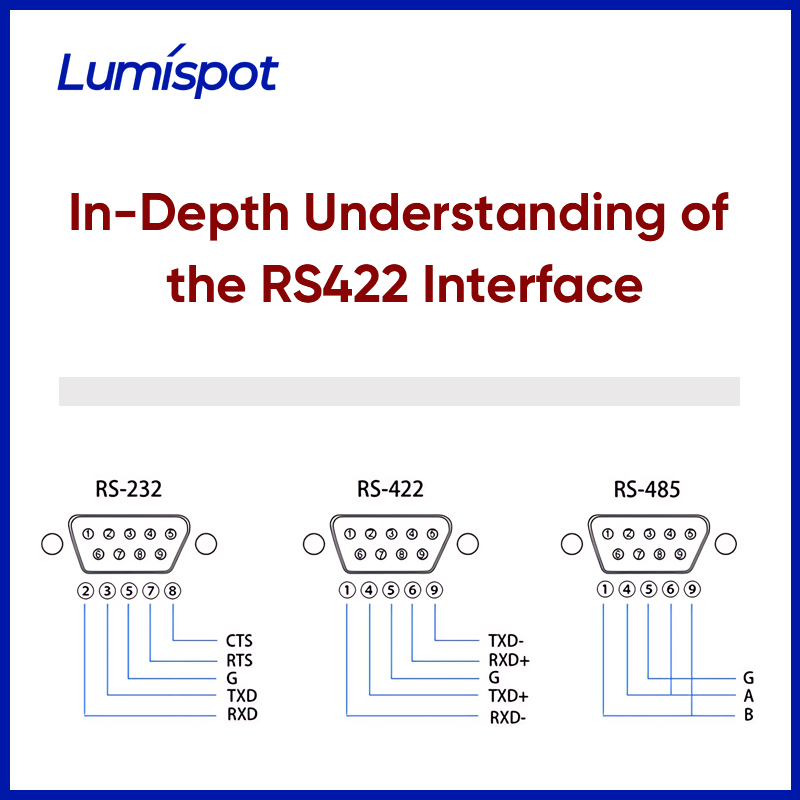In industrial applications, remote monitoring, and high-precision sensing systems, RS422 has emerged as a stable and efficient serial communication standard. Widely used in laser rangefinder modules, it combines long-distance transmission capabilities with excellent noise immunity, making it an essential interface in modern ranging systems.
1. What is RS422?
RS422 (Recommended Standard 422) is a serial communication standard developed by the Electronic Industries Alliance (EIA) that defines differential signal transmission. Unlike the traditional RS232 interface, RS422 uses a pair of complementary signal lines to transmit data. This differential transmission greatly improves noise resistance and communication reliability.
2. Key Technical Features of RS422
Transmission Mode: Differential signaling (twisted pair)
Max Transmission Speed: 10 Mbps (at shorter distances)
Max Transmission Distance: Up to 1200 meters (at lower speeds)
Max Number of Nodes: 1 driver to 10 receivers
Signal Wires: Typically 4 wires (TX+/TX–, RX+/RX–)
Noise Immunity: High (suitable for complex electromagnetic environments)
Communication Mode: Point-to-multipoint (single driver to multiple receivers)
3. Advantages of RS422
① Long-Distance Transmission
RS422 supports data transmission over distances up to 1200 meters, making it ideal for applications where measurement data must be transmitted across different locations or devices—such as railway surveying, perimeter monitoring, and warehouse logistics.
② Strong Noise Immunity
Thanks to its differential signaling, RS422 can effectively suppress common-mode noise, making it suitable for electrically noisy environments, such as industrial plants or outdoor installations.
③ Higher Data Stability
Even with long cable runs or in complex electrical settings, RS422 offers much lower data loss rates than traditional single-ended communication interfaces. This ensures stable and real-time output of distance measurements.
④ One-to-Many Communication
RS422 allows a single host to communicate with multiple receivers, enabling cost-effective multi-module ranging systems.
4. Applications in Laser Rangefinder Modules
RS422 is commonly used in laser rangefinder modules in the following scenarios:
Drones / Robotic Platforms: Where internal system noise is high, RS422 ensures stable communication.
Long-Range Perimeter Monitoring: Where distance data must be transmitted reliably to a central controller.
Military / Industrial Systems: Where communication reliability is mission-critical.
Harsh Environments (e.g., high temperature and humidity): Where differential signaling helps maintain data integrity.
5. Wiring Guide and Key Considerations
① Typical Connection Diagram:
TX+ (Transmitting Positive) → RX+ (Receiving Positive)
TX– (Transmitting Negative) → RX– (Receiving Negative)
RX+/RX–: Depending on whether the module requires feedback, these lines may or may not be used.
② Best Practices:
Use shielded twisted-pair cables to enhance anti-interference capability.
Ensure proper cable length matching and termination to avoid signal reflection.
The receiving device must support the RS422 protocol, or an RS422 converter should be used.
RS422 stands out with its excellent transmission performance and robustness, making it a key player in the reliable communication of laser rangefinder modules. For users who demand long-range transmission, data stability, and strong noise immunity, choosing a module with RS422 support is undoubtedly a reliable and future-proof investment.
Post time: Aug-07-2025

